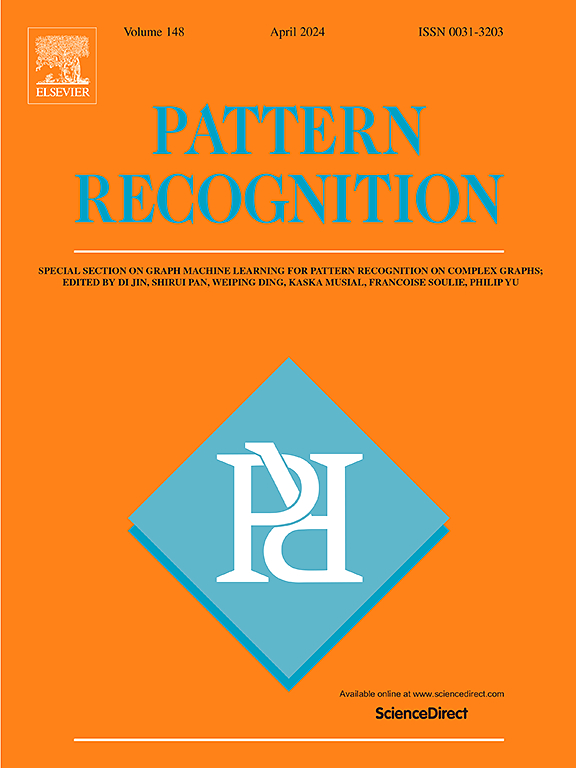CRCGAN: Toward robust feature extraction in finger vein recognition
IF 7.5
1区 计算机科学
Q1 COMPUTER SCIENCE, ARTIFICIAL INTELLIGENCE
引用次数: 0
Abstract
Deep convolutional neural networks (CNNs) have produced remarkable outcomes in finger vein recognition. However, these networks often overfit label information, losing essential image features, and are sensitive to noise, with minor input changes leading to incorrect recognition. To address above problems, this paper presents a new classification reconstruction cycle generative adversarial network (CRCGAN) for finger vein recognition. CRCGAN comprises a feature generator, a feature discriminator, an image generator, and an image discriminator, which are designed for robust feature extraction. Concretely, the feature generator extracts features for classification, while the image generator reconstructs images from these features. Two discriminators provide feedback, guiding the generators to improve the quality of generated data. With this design of bi-directional image-to-feature mapping and cyclic adversarial training, CRCGAN achieves the extraction of essential features and minimizes overfitting. Additionally, precisely due to the extraction of essential features, CRCGAN is not sensitive to noise. Experimental results on three public databases, including THU-FVFDT2, HKPU, and USM, demonstrate CRCGAN’s competitive performance and strong noise resistance, achieving recognition accuracies of 98.36%, 99.17% and 99.49% respectively, with less than 0.5% degradation on HKPU and USM databases under noisy conditions.
CRCGAN:在手指静脉识别中实现鲁棒特征提取
深度卷积神经网络(CNN)在手指静脉识别方面取得了显著成果。然而,这些网络往往过度拟合标签信息,从而丢失了基本的图像特征,而且对噪声很敏感,微小的输入变化就会导致识别错误。针对上述问题,本文提出了一种新的用于手指静脉识别的分类重建循环生成对抗网络(CRCGAN)。CRCGAN 由特征生成器、特征判别器、图像生成器和图像判别器组成,旨在实现稳健的特征提取。具体来说,特征发生器提取用于分类的特征,而图像发生器则根据这些特征重建图像。两个判别器提供反馈,指导生成器提高生成数据的质量。通过这种图像到特征的双向映射和循环对抗训练设计,CRCGAN 可以提取基本特征,并最大限度地减少过拟合。此外,正是由于提取了基本特征,CRCGAN 对噪声并不敏感。在 THU-FVFDT2、HKPU 和 USM 等三个公共数据库上的实验结果表明,CRCGAN 具有极高的性能竞争力和很强的抗噪能力,在 HKPU 和 USM 数据库上,CRCGAN 在噪声条件下的识别准确率分别达到 98.36%、99.17% 和 99.49%,识别率下降不到 0.5%。
本文章由计算机程序翻译,如有差异,请以英文原文为准。
求助全文
约1分钟内获得全文
求助全文
来源期刊

Pattern Recognition
工程技术-工程:电子与电气
CiteScore
14.40
自引率
16.20%
发文量
683
审稿时长
5.6 months
期刊介绍:
The field of Pattern Recognition is both mature and rapidly evolving, playing a crucial role in various related fields such as computer vision, image processing, text analysis, and neural networks. It closely intersects with machine learning and is being applied in emerging areas like biometrics, bioinformatics, multimedia data analysis, and data science. The journal Pattern Recognition, established half a century ago during the early days of computer science, has since grown significantly in scope and influence.
 求助内容:
求助内容: 应助结果提醒方式:
应助结果提醒方式:


